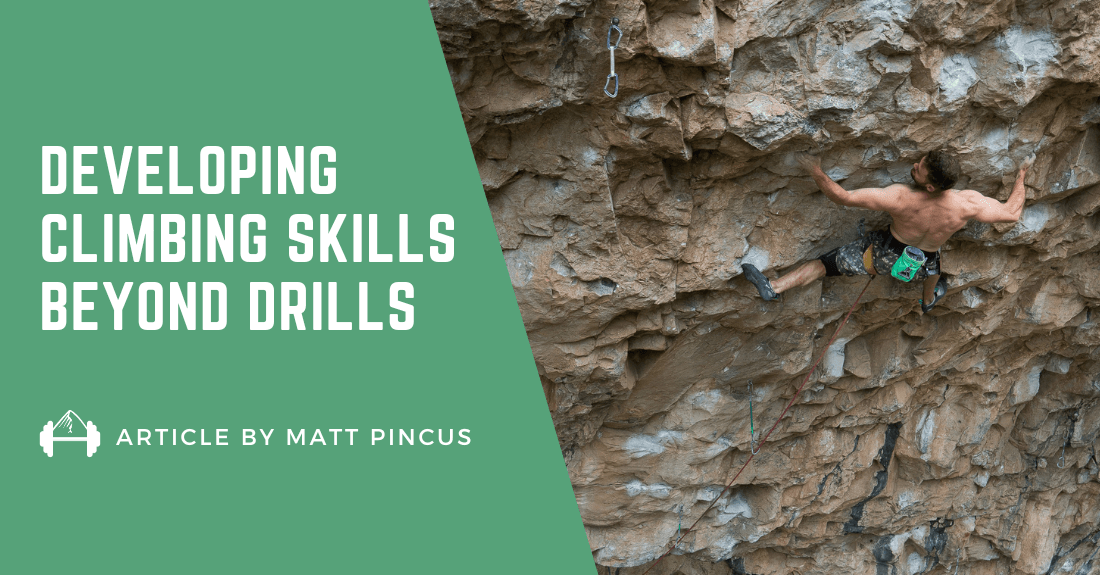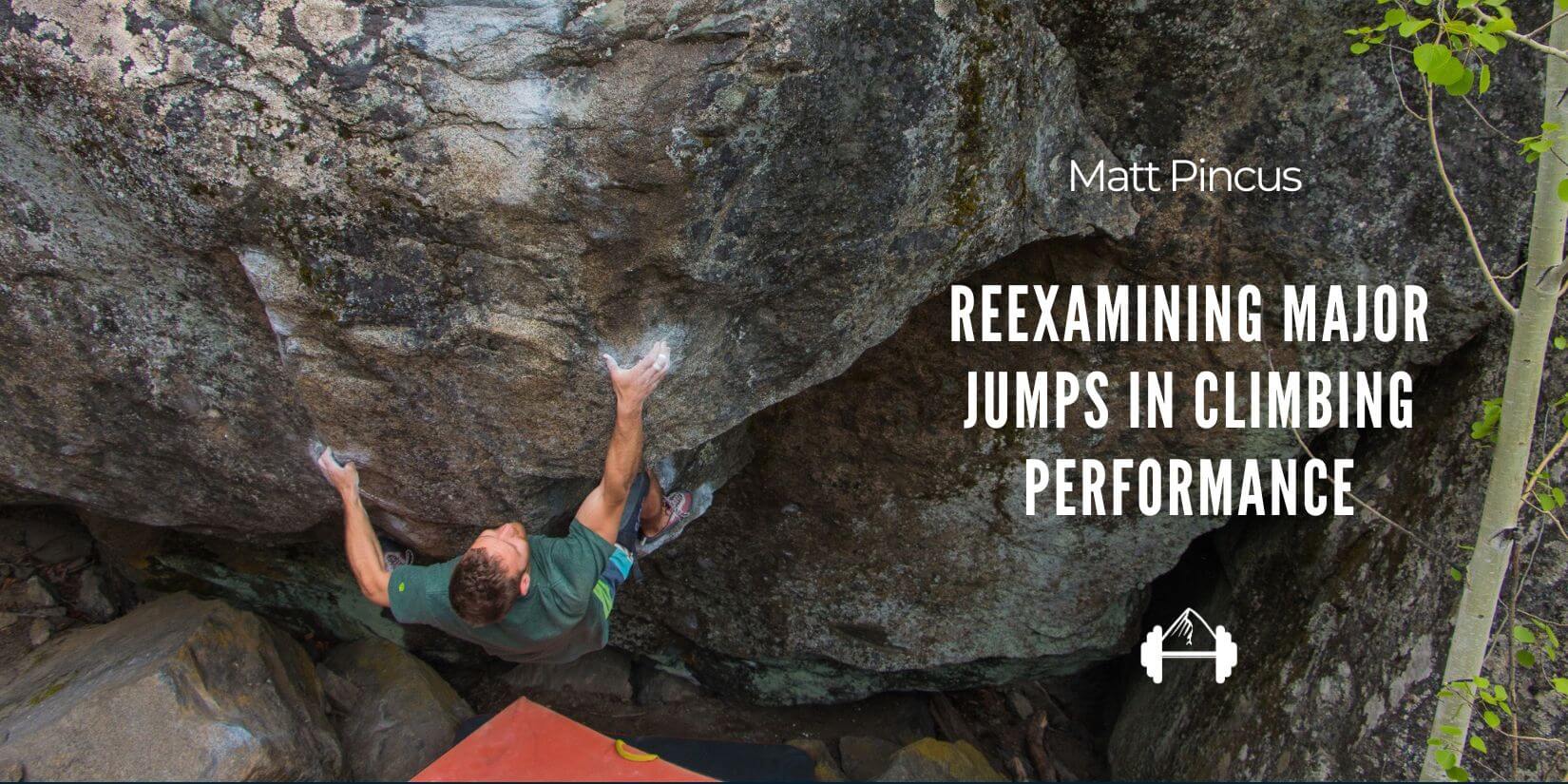This morning I woke up and there was a slight chill in the air. At least here in Wyoming, the fall season is right around the corner. As I wrap up my summer training block, I couldn’t be more psyched for the crisp days ahead.
Beyond simply being excited to climb outside as much as possible, I find myself reflecting on how I trained over the summer and on the quality of my preparation.
Here are the stats since the end of my spring season in early July:
- Board Climbing Sessions: 8
- Finger Board Sessions: 8
- Power Endurance Sessions: 4
On paper, it doesn’t look like much. This simplicity was by design.
The last day I tried my spring project was July 10th. With the fall season starting in early September, that left me with less than two full months to train. This is a pretty quick turnaround and much shorter than my winter training season, which typically spans from December through early March – time to be targeted. The goal was a strength and power tune-up and I’m happy with how it has gone.
Now, before I get sucked into all the details and minutia of these sessions, there’s a major feature of my preparation for the fall season these sessions don’t capture. Yes, these sessions are the main form of physical preparation I did over the summer and I don’t want to fully discount their importance.
The issue, however, is I know I was strong and fit enough to send my project this spring. I just didn’t.
As my physical level wasn’t the issue this spring, it didn’t make sense to me to simply prepare for another round of attempts from a physical perspective. Instead, I wrote out a list of what I felt were the major limiters in my climbing and how I planned to address them.
The Skill of Sending
The list of limiters was fairly wide-reaching. While I’ve been working on addressing all the items on my list, the main thing that stood out to me in relation to my failure on my spring project was my tendency to get stuck at 99%. Whether it be falling on the same move high up on a route or doing all the moves on difficult board climbs but never putting them all together, this “close but not quite done” status has become all too common for me.
It was clear to me that I was out of practice at sending.
The skill of sending isn’t something as measurable as finger strength on the fingerboard. However, it is, in my view, just as important. Yes, I want strong fingers, but mostly I’m interested in sending hard routes. Brass tax, routes sent is the measurement I’m ultimately concerned with.
While I know lots of people would like to know the details of the above sessions, they are pretty simple and, in the end, not what I feel were the important elements of my summer training.
Figuring out a way to practice sending and executing when it matters felt dramatically more important.
Here’s what I did:
3 Try Drill
For all of my bouldering sessions, I would warm up and then perform the three-try drill on a boulder that’s difficulty was somewhere between my flash level and project level. The rules are simple. You get three tries to send and that’s it. All the goes are from the start, and, if you don’t send within three attempts, there’s no fourth go. This boulder is closed for the remainder of the session. You can cycle back to it and work on it another day but no more attempts this session.
The whole point here is that by imposing this external constraint you can’t fall back on having another attempt. Don’t hit the second-to-last hold perfectly? Better still try hard and make it count. Foot pops unexpectedly? Better try hard, put it back on, and keep going.
These are things I expect myself to be able to do when on redpoint and if you expect yourself to be able to do something in the performance environment then you should practice in the training setting.
On-the-Minute Boulders
The four power endurance sessions I completed all consisted of completing flash level to flash level +1 Kilter Board boulders on the minute (OTM). The session looks like three rounds of the following:
- Minute 1: Problem A
- Minute 2: Problem B
- Minute 3: Problem C
- Minute 4: Problem D
- Minute 5: Problem E
- Minute 6: Problem F
- Minute 7: Problem G
- Minute 8: Problem H
- 10 minute rest between sets (3 sets total)
Clearly, these intervals have a power endurance training stimulus. They also have a major skill practice element hiding in plain sight. If you complete several sessions of these intervals on the same problems, you are going to get to know them REALLY well. In the later rounds, you are also going to be feeling fatigued and need to execute these sequences you’ve practiced in a fatigued state – sounds a lot like redpointing to me.
In doing these intervals, I tried to imagine that each one of these problems was the redpoint crux of my project or the boulder guarding the chains. I took them seriously, tried to climb quickly and efficiently through these rehearsed sequences no matter how tired I was, and fought hard for every top even if I made a mistake or didn’t think I was going to stick the next move. Just as with the 3 Try Drill, these are things I expect myself to do when trying to send a hard route so I made sure to practice it during my training.
2nd Tier Routes Outside
Now the main thing I didn’t include in my list of sessions that opened this newsletter is that I also climbed outside quite a bit over the summer. No, I didn’t just keep trying project-level routes despite the heat. Instead, I dropped the grade and focused on simply doing routes.
Now, I always want to be trying the hardest, coolest route around. Unfortunately, projecting routes that are really hard for you takes time, and if it’s all you ever do you can go long periods without sending. That doesn’t sound like good “sending practice” to me.
So instead, I dropped the grade and spent my summer climbing routes in the 13b to 13d range. At these grades, I still need to try hard and success isn’t guaranteed, but I’m usually talking about a matter of attempts or sessions rather than seasons. As a result, I am going through the complete projecting process at an expedited rate.
This means more opportunities to practice executing when it really counts. I can’t think of a better or more specific form of practice. Plus, this kind of “training” – which I would say was by far the most important of my summer training block – has the added benefit of allowing you to get outside and do routes. Win-win.

The author on Ghost Moon 5.13d in Wild Iris, Wyoming
Relative Intensity
The final key detail that I want to leave you with here is about relative intensity. It’s pretty simple to say that you are going to practice sending. As with many important elements of improving at climbing, simple doesn’t mean easy.
How do you ensure you are sending if the whole reason you are including this kind of practice in your program is because you haven’t been sending enough?
The answer is simply that you need to reduce the difficulty of the climbs you are trying until you find success. Now, I’m not saying just climb on easy things and never fall off. I tried damn hard – both at the cliff and in my indoor training – this summer and there are routes and boulders I left undone. What I did do, however, was make sure I was succeeding regularly.
My hope is that I will not only be feeling strong, snappy, and fit from the physical preparation I’ve done, but also that I will be able to carry the sense of momentum and confidence in my ability to execute with me into the fall season and another round of attempts at my Wolf Point project.
Now that the season is starting, there’s only one thing left to do: show up and find out.
Stay the course. Keep showing up.
Matt
Work with Matt on Your Own Climbing Performance
Whether you’re in the middle of your outdoor climbing season, you’re preparing for a big trip, or you just want to get better at rock climbing, Matt coaches climbers of all abilities on an individual basis no matter where you are in the world.
He’ll sit down over Zoom and talk to you about your goals, your strengths and weaknesses, your time limitations, and the equipment you have available. After you talk, he’ll make you a program specific to your needs on the TrueCoach app that you can follow and communicate with him through.
He’s helped hundreds of climbers get smarter about their training and stronger overall. He’s super easy to work with, very smart, dedicated, extremely responsive and responsible, and he’ll get you the results you’re looking for without overtraining you.
Work with Matt as Your Coach
If you’re not quite ready to sign up for one-on-one coaching with Matt but you do want his expertise and a structured plan, he designed both our Performance Bouldering and Performance Route Training Programs, which are super affordable, beautifully laid-out training plans you can access from your phone.
Matt uses the same kinds of drills described in this newsletter in both of these programs. You get targeted performance climbing practice, power endurance drills, and all kinds of other skill practice in each session. Plus you’ll get strength training sessions laid out for you using weights, bodyweight, and TRX.
There are 3 levels to choose from in either the bouldering or routes program, and you get access to Matt in free office hours once per month to ask any questions you have.
You can log your workouts in an online logbook so you can track your progress, and you can try the whole thing for free for 7 days.
Check Out the Bouldering Program
Check Out the Routes Program
|
|
If you want this kind of content to show up in your email inbox as soon as it’s published on TrainingBeta, you can opt into our email list here.





Leave A Comment